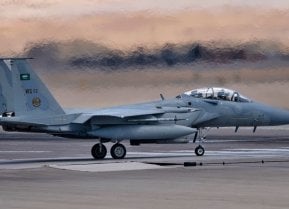Ismail Haniyeh’s Killing in Iran Brings Israel Closer to Victory
The death of Hamas’ leader leaves the organization headless and less able to develop a strategy going forward.
Hamas leader Ismail Haniyeh was killed in Iran on July 31. Haniyeh was one of the most well-known faces of Hamas in the region. Ever since he took over Hamas’ Political Bureau in 2017, he has been a key leader in navigating the rising power of Hamas in the region and globally. Now, Haniyeh is dead, and his group is suffering blows in both Gaza and throughout the Middle East. Ten months of war in Gaza may now move in a fundamentally new direction.
Haniyeh is presented as the political face of Hamas, as if he is different than the military part of Hamas that led the attack on Israel on October 7.
When the attack took place, Haniyeh was in Doha, Qatar, along with other Hamas leaders. These leaders included Saleh al-Arouri, who was based in Beirut but had fortuitously arrived in Doha in time for the October 7 attack. While the details of the attack may have been kept from Haniyeh, such as the exact time it would take place, it’s clear Haniyeh supported the attack. Shortly afterward, he gathered Hamas leaders in Doha for a video where the men prayed and celebrated and later spoke in praise of the attack.
Haniyeh’s goal in the wake of October 7 was to drum up support in the region. His Qatar headquarters allowed him to make the acquaintance of various Middle Eastern leaders. Consequently, he enjoyed a great deal of influence regionally and internationally. Haniyeh has held numerous meetings with Turkey’s long-time leader, Recep Tayyip Erdogan. He traveled to Saudi Arabia under the guise of a religious pilgrimage in April 2023 for meetings. He has also traveled to the Egyptian capital of Cairo.
Haniyeh’s travels in the region, before and after October 7, illustrate how the unprecedented terror attack on Israel, including the murder of more than 1,100 people and kidnapping of 250 on October 7, has not dimmed Hamas’ relations in the region. In fact, it’s possible to conclude that Hamas has received more regional support after October 7. Haniyeh was the center of that support. Hamas has other officials and well-known figures, such as the Hamas-based leader Yahya Sinwar, as well as Ghazi Hamed, Mahmoud Zaher, Khalil al-Khayya, Khaled Meshaal, Zaher Jabareen, Basem Naim, Mahmoud Zaher, Osama Hamdan, and Sami Abu Zakhri. Still, none of them reach the level of Haniyeh. Meshaal, for instance, was replaced by Haniyeh in 2017 and has taken a back seat in recent years. After Israel killed Marwan Issa and likely killed Muhammed Deif in Gaza, it appears Sinwar is the last well-known Gaza-based leader of Hamas. Sinwar’s brother is also a key leader, but the two of them should be seen as one element.
Hamas has also suffered two critical setbacks abroad. Saleh al-Arouri was killed in Beirut in January. Haniyeh is now dead as well. This means that Hamas has suffered blows to its political leadership in Gaza, Lebanon, and Qatar. This doesn’t mean Hamas cannot recover. In the past, it also lost leaders. Ahmed Yassin and Abdel Aziz Rantisi were killed by Israel in 2004. Their deaths helped pave the way for Haniyeh. However, it took time for Haniyeh to build up Hamas’ power after their demise. Haniyeh was essential to Hamas’ electoral victory in the Palestinian elections in 2006 and briefly served as the prime minister of the Palestinian Authority. Hamas fumbled that role and seized Gaza in a coup in 2007, killing and exiling political opponents and turning Gaza into a platform for terror attacks on Israel.
It was Haniyeh who led Gaza down the road of becoming a springboard for ever-larger attacks on Israel. Hamas acquired longer-range rocket technology with Iran’s backing, transforming its short-range Qasam rocket arsenal into a colossus of long-range rockets that could hit Tel Aviv and Jerusalem. Haniyeh also helped secure more funding via Doha, propping up Hamas in Gaza. With the funding, Hamas was able to build hundreds of miles of tunnels and position its rockets in a more sophisticated manner so it could fire barrages of more than 100 rockets at a time.
By the time Sinwar had fully transformed Hamas into the twenty-four battalions of fighters that launched the October 7 attacks, Haniyeh was ensconced in Doha. By this time, the day-to-day tactics of Hamas were in Sinwar’s hands. However, strategic planning was in Haniyeh’s hands. He was the one who galvanized support for Hamas after October 7. He reached out to Turkey. He sent a Hamas delegation to Russia and China. When Beijing hosted fourteen Palestinian factions in China, Haniyeh played a key role. In fact, Haniyeh met a Chinese envoy to Qatar in March 2024 to pave the way for China’s role in trying to reconcile Palestinian groups.
Israel has waged almost ten months of war in Gaza. This has been a tactical success, grinding down Hamas battalions and eliminating numerous Hamas members. Israel estimates that around 14,000 Hamas members have been eliminated. Hamas has also run out of most of its rockets during this war and lost control of the southern Gaza border with Egypt. Hamas still controls a swath of Gaza, mostly because Israeli forces carry out sweeps of neighborhoods and then leave. The war is dragging on, and there is no clear strategy to end it. Endless ceasefire and hostage talks have not been fruitful. Haniyeh drove a hard bargain in these talks, seeking a long-term ceasefire and a slow release of hostages that would go on for months or years. This would benefit Hamas because a trickle of hostage releases would let it celebrate its success each week as Israel was forced to release detainees in exchange. This would enable Hamas to increase its influence in the West Bank, with its eyes set on a Palestinian unity government brokered by China.
If a unity government is formed in Ramallah, it is likely Hamas will be part of it, either officially or informally. Haniyeh would have seen this as an opportunity to return to the West Bank and swoop in, emerging again as the Palestinian prime minister almost two decades after losing the job in 2007. If he’d returned, he would have come back to a changed region, one where U.S. power is much reduced and where China, Russia, Iran, and Turkey are backing Hamas. Israel also faces much larger threats today than in 2007. In 2007, Hezbollah was weakened by the 2006 war. Now, it is strong. Haniyeh would have understood this. Instead of returning to the West Bank, though, he is now off the political map permanently. Haniyeh’s killing in Iran could thus lead to a fundamental recalculation in the region. Israel, following a tactical victory over Hamas in Gaza, could now be on the verge of a strategic victory over Hamas’ plans for the day after the war.
About the Author:
Seth Frantzman is the author of The October 7 War: Israel’s Battle for Security in Gaza (2024) and an adjunct fellow at The Foundation for Defense of Democracies.
Image Credit: Shutterstock.com.


